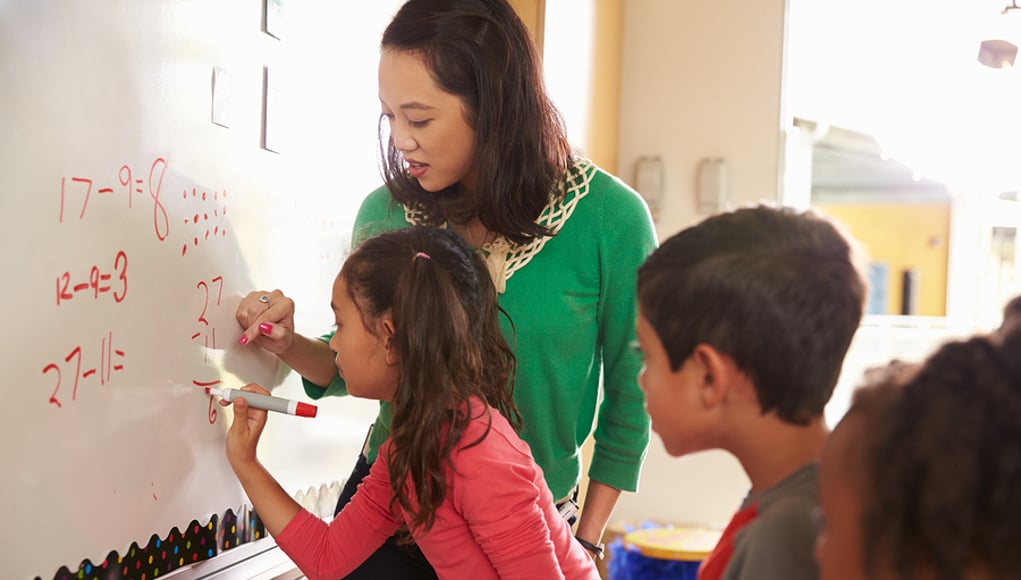What Does Personalized Learning Look Like in Schools?

By iNACOL
Schools and districts across the country are realizing the need to move away from the industrial, factory model of K-12 education.
Across the country—and in fact, around the globe—communities are coming together to explore crucial questions about the purpose of education and to have deep conversations about how they can better ensure that graduates are getting what they need to become successful, productive participants and contributors to society. Many schools and districts are transitioning toward more personalized learning models to give learners the support they need to truly excel and thrive.
In a personalized classroom, school or district, teachers design and structure learning to meet the needs of every student. This means each student works toward achieving the same set of college- and career-ready standards with the individual support they need along the way. But what does personalized learning look like in real schools?
Personalized Learning Characteristics
While there are different approaches to personalized learning, the following characteristics are common across most personalized learning models:
- Student-centered learning: Students have more ownership of their learning. Students have a voice and make choices with their teachers about how they learn best.
- More than just a test score: Teachers are more concerned with what students are learning and how they acquire knowledge than preparing for a year-end test. Teachers create opportunities for students to develop important skills, such as collaboration, problem solving and critical thinking. Students communicate progress on goals and work towards achieving their goals through personalized pathways that build important knowledge and skills.
- Students move on when they’re ready: Students have clear learning goals and objectives each day. Once a student has mastered these learning objectives, they “show what they know and can do.” This is assessment for learning. Once a student shows that they learned the specific knowledge or skill, they can move on to their next goal. Students don’t move ahead until they’ve mastered a skill. Tests and assessments serve an ongoing purpose—to give teachers and students information about each learner. The assessments let teachers know when students need more practice so they can provide additional support to those students.
- Anytime, anywhere learning: Teachers create opportunities for students to learn both inside and outside the traditional classroom and school day. Students are able to learn in many different ways – from internships to museums, and place-based learning experiences in the community as well as through digital learning opportunities. This empowers teachers to personalize learning and expand access to resources for student learning.
Personalized Learning Designs
There are many ways to implement personalized learning. There are classroom-level differences in the way teachers teach and in the way students learn, and there are school-level differences in topics like grading. Regardless of these differences, there are many things about personalized learning environments that are familiar, such as students learning individually and together, a combination of small and whole group activities, demonstrations and instruction from the teacher, meaningful projects, extracurricular activities and more.
Opportunity by Design was launched in 2013 in seven urban school districts and has created 12 innovative high schools that reflect 10 integrated school design principles. These principles are sourced from evidence-based research, enriched by emerging tools and practices, and refined by input from educators and experts. The graphic below highlights four of these principles that are especially important for communicating what’s possible with personalized learning to parents and communities.

Schools and districts across the country are seeing the tremendous potential of personalized learning to better educate all students and equip them to thrive in college, career and life. Our recent report can help parents and communities understand what personalized learning looks like in practice by providing examples of teachers personalizing learning in their schools and districts, and sharing student perspectives on how new instructional designs are meeting their unique needs.
For more, see:
- New Personalized Learning Report for Parents and Communities
- How Students Can Succeed with Personalized Learning
- Getting Personalized Learning Right the First Time
This post originally ran on the iNACOL blog.
Stay in-the-know with all things EdTech and innovations in learning by signing up to receive the weekly Smart Update. This post includes mentions of a Getting Smart partner. For a full list of partners, affiliate organizations and all other disclosures, please see our Partner page.






0 Comments
Leave a Comment
Your email address will not be published. All fields are required.